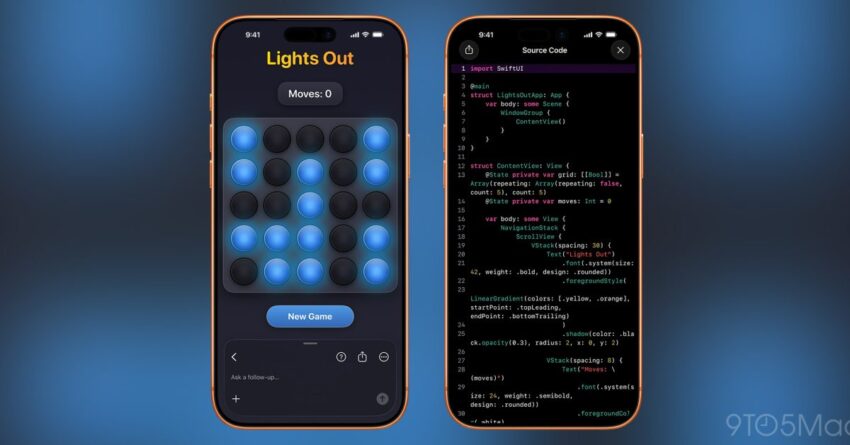
this vibe coding app turns your ideas A new iPhone app developed by a team of former Apple employees aims to revolutionize the way users create SwiftUI applications by allowing them to transform voice or text inputs into functional apps in mere seconds.
this vibe coding app turns your ideas
Introduction to Vibe Coding
The concept of “vibe coding” is gaining traction as a user-friendly approach to software development. Unlike traditional coding, which often requires extensive knowledge of programming languages and frameworks, vibe coding simplifies the process, making it accessible to a broader audience. The newly launched app leverages this concept, enabling users to create SwiftUI applications directly from their iPhones.
The Team Behind the Innovation
This innovative app is the brainchild of a group of ex-Apple employees who were instrumental in the creation of SwiftUI, Apple’s framework for building user interfaces across all Apple platforms. Their deep understanding of SwiftUI’s capabilities and limitations has allowed them to design an application that not only simplifies the coding process but also enhances the user experience.
Background on SwiftUI
SwiftUI was introduced by Apple in 2019 as a modern way to build user interfaces for iOS, macOS, watchOS, and tvOS. It allows developers to create apps using a declarative syntax, which means they can describe what the user interface should look like and how it should behave without having to write extensive amounts of code. This framework has been widely adopted by developers, but it still requires a certain level of programming knowledge.
The Need for Simplification
Despite its advantages, many potential app creators are deterred by the complexities of coding. The new vibe coding app addresses this gap by providing a platform where users can express their ideas in natural language, whether through voice or text, and have those ideas translated into functional SwiftUI applications. This democratizes app development, allowing individuals without a technical background to bring their ideas to life.
How the App Works
The app operates on a straightforward premise: users input their ideas in a conversational manner, and the app generates a SwiftUI application based on that input. Here’s a closer look at the process:
User Input
Users can provide input in two primary ways: voice commands or text entries. This flexibility caters to different user preferences and makes the app more accessible. For instance, a user might say, “Create a to-do list app with a dark mode,” or type a similar request. The app’s natural language processing capabilities interpret these commands and convert them into code.
Code Generation
Once the user’s idea is captured, the app utilizes advanced algorithms to generate SwiftUI code almost instantaneously. This rapid code generation is a significant feature, as it allows users to see their ideas come to life in real-time. The app not only creates the basic structure of the application but also incorporates various UI elements based on the user’s specifications.
Testing and Distribution
After the app is generated, users can test it directly on their iPhones. The app includes a built-in simulator that allows users to interact with their newly created application before distributing it. Once satisfied, users can easily distribute their apps through TestFlight, Apple’s platform for beta testing apps. This feature is particularly beneficial for those looking to gather feedback from potential users before a full launch.
Implications for App Development
The introduction of this vibe coding app has several implications for the future of app development:
Democratization of App Creation
By lowering the barrier to entry for app development, this app opens the door for a wider range of individuals to create and share their ideas. Entrepreneurs, educators, and hobbyists can now develop applications without needing extensive programming knowledge. This democratization could lead to a surge in innovative apps that cater to niche markets and specific user needs.
Encouraging Creativity
With the ability to quickly prototype ideas, users are encouraged to experiment and iterate on their concepts. This fosters a culture of creativity, where individuals can explore their ideas without the fear of failure that often accompanies traditional coding. The app allows for rapid testing and modification, enabling users to refine their applications based on real-time feedback.
Potential for Educational Use
This app could also serve as a valuable educational tool. By allowing students to create applications without needing to learn complex programming languages, it can introduce them to the fundamentals of app development in a more engaging way. Educators can use the app to teach concepts related to design, user experience, and functionality, making the learning process more interactive.
Stakeholder Reactions
The launch of the vibe coding app has garnered attention from various stakeholders in the tech community:
Developers’ Perspective
Many developers view this app as a double-edged sword. While it democratizes app creation, some express concerns about the potential oversaturation of the app market with low-quality applications. Established developers may worry that the influx of non-technical creators could lead to increased competition and dilute the quality of apps available to consumers.
Entrepreneurs and Startups
Entrepreneurs and startups are generally enthusiastic about the app, recognizing its potential to streamline the development process and reduce costs. By enabling quick prototyping, the app allows startups to test their ideas in the market without significant upfront investment in development resources. This could lead to a more dynamic startup ecosystem where innovative ideas can be rapidly tested and refined.
Educational Institutions
Educational institutions are also taking note of the app’s potential. Many educators see it as a way to engage students in technology and entrepreneurship. By integrating the app into curricula, schools can provide students with hands-on experience in app development, preparing them for future careers in tech.
Conclusion
The launch of this vibe coding app represents a significant shift in the landscape of app development. By allowing users to create SwiftUI applications through voice or text input, it not only simplifies the coding process but also opens up new opportunities for creativity and innovation. As the app gains traction, it will be interesting to observe how it influences the app development ecosystem and the broader tech community.
Source: Original report
Was this helpful?
Last Modified: October 2, 2025 at 1:40 am
0 views














